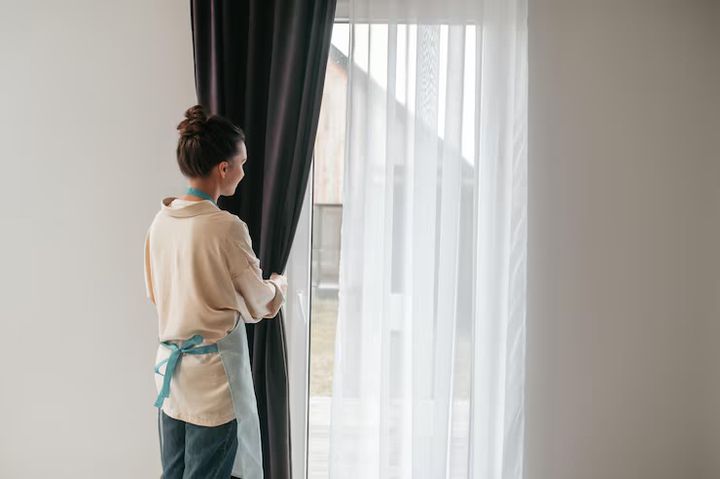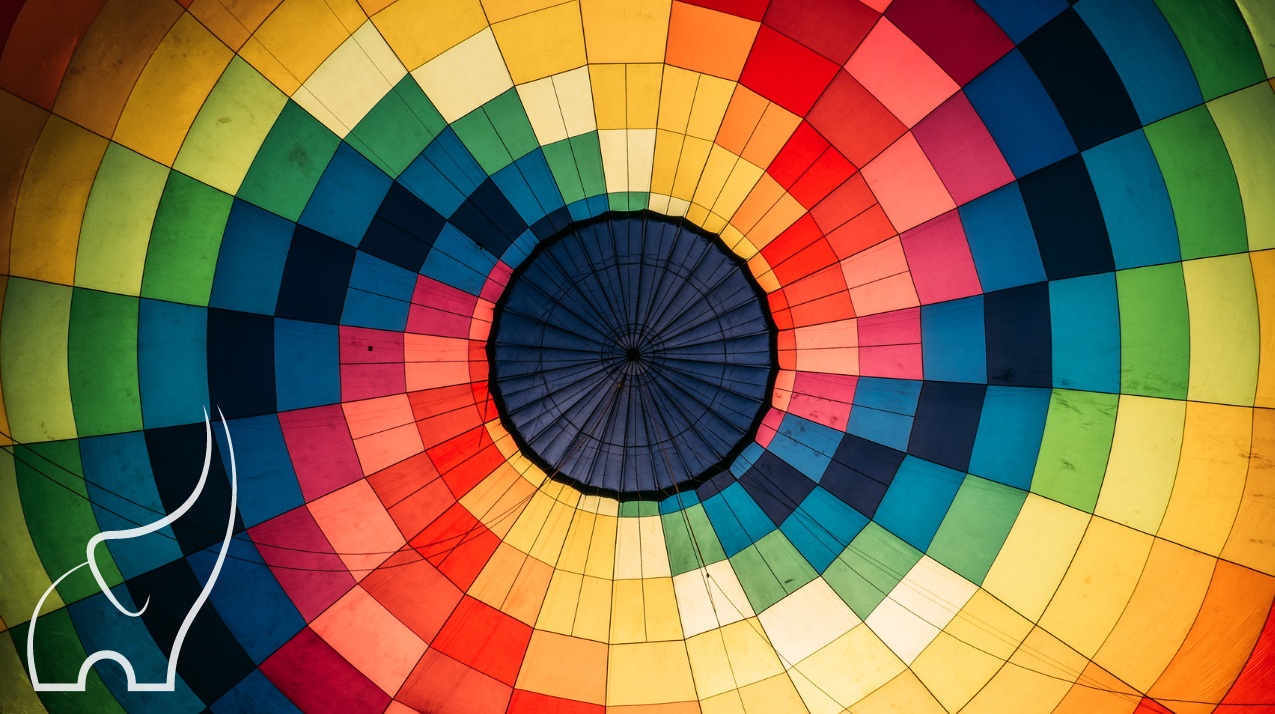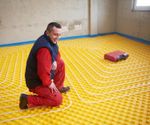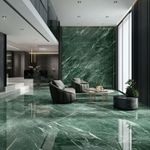
Tips and Advice for Choosing the Right PVC Curtains
PVC curtains, also known as strip curtains, are a simple yet highly effective solution for creating environmental and physical barriers in industrial and commercial settings. They are made from overlapping strips of flexible Polyvinyl Chloride (PVC) material that hang from a rail or track. The purpose of these curtains is to provide a physical separation between two spaces while allowing for easy and unhindered passage of personnel, forklifts, and other machinery.
The Importance of PVC Curtains Today

In 2025, PVC curtains are considered a foundational tool for operational efficiency and safety across many industries. They are a low-cost, high-impact solution that addresses a variety of problems related to environmental control and worker safety. Their importance has only grown with the increasing focus on energy conservation and stringent health and safety standards.
Who It Affects
Warehouse and Logistics Managers: These professionals use PVC curtains to maintain separate environmental zones within a large facility without compromising the flow of goods.
Cold Storage Operators: In the cold chain, maintaining a stable temperature is critical for product integrity and energy costs. PVC curtains are an essential tool for this purpose.
Food and Pharmaceutical Companies: These industries require strict controls over hygiene and contamination, making PVC curtains a vital component of their facility design.
Factory and Manufacturing Supervisors: PVC curtains are used to create dust-free zones, reduce noise, and ensure the safety of workers by separating them from machinery.
Business Owners: From retail stores to commercial kitchens, any business that needs to separate a back-of-house area from a customer-facing or production area can benefit from their use.
Problems It Solves
Energy Conservation: This is one of the most significant problems PVC curtains solve. By acting as an insulating barrier, they prevent conditioned air (whether heated or cooled) from escaping a room. This can lead to a substantial reduction in energy consumption and lower utility bills in environments like cold storage or air-conditioned factories.
Temperature and Humidity Control: In industries like food processing, pharmaceuticals, or electronics manufacturing, maintaining a stable temperature and humidity level is non-negotiable. PVC curtains help create and sustain these controlled microclimates, protecting products and ensuring quality.
Pest and Contaminant Control: The overlapping design of PVC strips creates a sealed barrier that effectively keeps out pests like insects and rodents. They also prevent the ingress of dust, dirt, and airborne contaminants, which is vital for maintaining a clean and hygienic environment.
Noise Reduction: While not a complete soundproofing solution, the dense PVC material can absorb and dampen sound waves, helping to reduce noise pollution from machinery and create a quieter, more comfortable working environment for employees.
Enhanced Safety: The transparency of PVC curtains allows for excellent visibility. This is a crucial safety feature in busy warehouses where forklifts and personnel operate in the same area. It helps prevent collisions by allowing both parties to see oncoming traffic and avoid accidents.
Recent Updates and Trends
The PVC curtain industry, while seemingly simple, is continually evolving to meet new demands for specialized applications and improved functionality. Over the past year (late 2024 to mid-2025), several key trends have emerged.
Advanced Additives and Formulations: A major development is the introduction of specialized PVC formulations. Manufacturers are now producing curtains with built-in antimicrobial additives that inhibit the growth of bacteria, making them ideal for sterile environments like food processing plants and hospitals. Similarly, anti-static PVC curtains are now available, which are essential for electronics manufacturing facilities to prevent electrostatic discharge that can damage sensitive components.
Automated and Smart Systems: The integration of PVC curtains into larger automated systems is a growing trend. Automated curtains can be equipped with motion sensors or linked to a facility’s IoT network. This allows the curtains to automatically open and close when a vehicle or person approaches, maximizing efficiency and minimizing energy loss.
Focus on Sustainability: With an increasing global emphasis on environmental responsibility, manufacturers are developing PVC materials that are more recyclable and contain fewer harmful chemicals. There is a push toward using more eco-friendly plasticizers and establishing take-back programs to recycle used curtains, reducing landfill waste.
Customized and High-Performance Hardware: The hardware used to hang the curtains is also seeing innovation. New mounting systems are being designed for easier installation and greater durability. Stainless steel tracks and brackets are becoming standard for corrosive environments, and modular systems are making it simpler for businesses to reconfigure curtain layouts as their needs change.
Laws and Policies
The use of PVC curtains in India and around the world is often governed by various laws, standards, and regulations, particularly those related to food safety, occupational health, and environmental protection.
Food Safety and Standards: In India, the Food Safety and Standards Authority of India (FSSAI) issues guidelines and regulations that mandate strict hygiene and temperature controls in food processing, storage, and handling facilities. PVC curtains, particularly those with antimicrobial properties, are considered a key tool for compliance, as they help prevent cross-contamination and maintain the integrity of the cold chain.
Occupational Health and Safety: Organizations like the Directorate General of Factory Advice Service & Labour Institutes (DGFASLI) in India establish safety standards for industrial workplaces. These standards often require measures to control noise, dust, and exposure to hazardous materials. PVC curtains contribute to compliance by providing physical barriers that mitigate these risks, ensuring a safer environment for workers.
Environmental Regulations: The production, use, and disposal of plastic-based products like PVC are subject to environmental regulations. Governments may impose restrictions on certain chemical additives in the manufacturing process or require companies to manage the end-of-life disposal of these materials in an environmentally sound manner.
Tools and Resources
For businesses looking to select and install PVC curtains, a number of helpful tools and resources are available to ensure the project is successful.
Online Sizing Calculators: Many suppliers offer free online calculators on their websites. By simply entering the dimensions of an opening (width and height), these tools can help you determine the number of PVC strips needed, the required overlap, and the total cost.
Industry Standards and Guides: Reputable industry associations and standards bodies often publish technical specifications and application guides for PVC materials. These documents can provide information on material thickness, temperature ratings, and recommended overlap percentages for different applications.
Manufacturer Catalogs and Specifications: The websites of major PVC curtain manufacturers are an excellent source of detailed information. They typically provide comprehensive product catalogs with specifications for each type of curtain, including temperature range, transparency level, and specialized features.
Online Installation Tutorials: For those who choose to perform a self-installation, many manufacturers and distributors provide video tutorials and detailed step-by-step guides. These resources can simplify the process, helping to ensure the curtains are mounted correctly for optimal performance.
Frequently Asked Questions
What is the difference between a PVC strip curtain and a PVC sheet?
A PVC strip curtain is made of multiple individual strips that overlap, allowing for easy passage. A PVC sheet is a single, continuous piece of PVC material. While a sheet provides a more complete seal, a strip curtain is more practical for areas with frequent traffic, as it allows for partial opening and closing without the need for a full door.
How do I clean PVC curtains?
Cleaning PVC curtains is a straightforward process. For most applications, a simple cleaning solution of mild soap and water applied with a soft cloth or sponge is sufficient. Avoid using harsh chemical cleaners or abrasive materials, as they can damage the PVC and make it cloudy.
Can PVC curtains be used outdoors?
Yes, but special "low-temperature" or "cold-resistant" PVC is recommended for outdoor use in colder climates to prevent the material from becoming brittle and cracking. It's also important to choose a mounting system that is resistant to rust and corrosion if it will be exposed to the elements.
What is the lifespan of a PVC curtain?
The lifespan of a PVC curtain varies depending on its thickness, the level of traffic it endures, and the environment. In a high-traffic industrial setting, it might last between 3 to 5 years before needing replacement. In a low-traffic environment, it could last for 10 years or more with proper care.
Conclusion
PVC curtains are a testament to the power of a simple, practical design. They are a highly effective and cost-efficient solution for managing a variety of industrial and commercial challenges. From conserving energy and maintaining environmental controls to enhancing workplace safety and hygiene, their benefits are clear and tangible. By understanding the different types of curtains available, the latest innovations in their technology, and the importance of professional installation, businesses can make a smart decision that improves their operations and contributes to a safer, more sustainable work environment.










